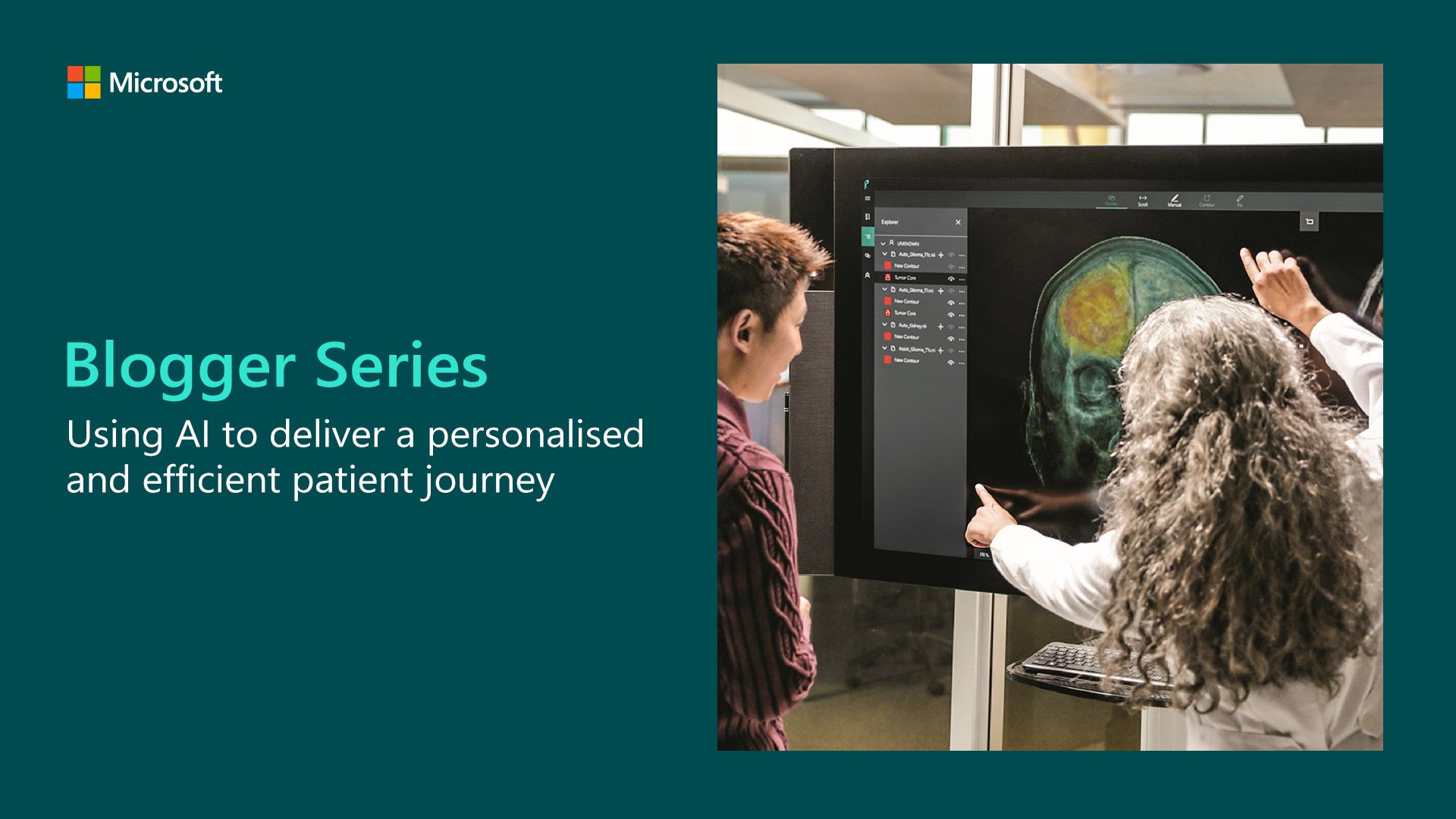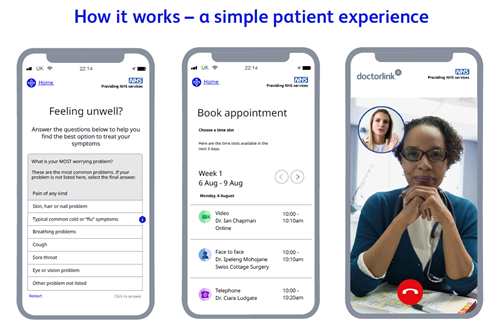
Using AI to deliver a personalised and efficient patient journey

If anyone understands the value of a great patient experience, it’s Alfonso Ferrandez. The Chief Technology Officer at Doctorlink is ruminating on the use of AI in healthcare.
Artificial intelligence is transforming the way people access care, and yet, as Alfonso explains, “a lot of people have distrust for AI in healthcare. There’s a reluctance to automate things for fear of making humans redundant.”

Hosted on Microsoft Azure, Doctorlink is an app developed by clinicians that provides a ‘digital front door’ to primary care services. Patients discuss their symptoms with the chatbot, then receive the care they need.
This Symptom Assessment tool is underpinned by a complex dataset of clinical algorithms developed in-house over 18 years. Over 2,000 unique outcomes are possible, and it provides a safety net for more urgent clinical conditions. All that produces the digital equivalent of that familiar face-to-face consultation, delivering convenient medical care for all, particularly people who struggle to attend physical appointments.
Refining the AI-enabled patient journey
The data-crunching app analyses the clinical accuracy of outcomes, but also patients’ behaviours throughout the assessment. Should enough patients pause at a particular question, for instance, it may indicate confusion – and a need to simplify the experience. By switching to more accessible, human language, such as changing ‘abdominal pain’ to ‘stomach ache’, Doctorlink saw far more patients complete their assessments.
Given its use in a heavily regulated environment, the Doctorlink chatbot doesn’t update through AI. It relies, instead, on Machine Assisted Learning, which helps clinicians improve the patient experience without removing their clinical expertise.

“We don’t believe AI could or should replace doctors,” Alfonso says. “We believe that AI and machine learning can help healthcare practitioners enhance their patient care and empower patients to find their right treatment path.”
The machine provides population and algorithmic improvement data, while clinicians evaluate and verify whether it’s safe to make those changes. As such, the human interface and clinical oversight is maintained.
Unlocking the digital front door with AI
As Alfonso knows only too well, a patient’s journey doesn’t end after their online assessment. It’s only just beginning.
Based on the analytics collected, the app personalises healthcare advice that’s right for the patient. This may be prompting users to book a face-to-face or video consultation with a GP or directing them to visit the appropriate health services in the local area.
In this way, Doctorlink helps create a framework for joined-up care that can evolve into Integrated Care Systems, where GP practices work alongside community-based providers. This allows the delivery of personalised patient care at scale. Beyond improvements to patients’ well-being, Doctorlink has also helped healthcare professionals save both time and money, leading to increased staff productivity and more efficient resource management.
Already, surgeries using the app are seeing 22% of people redirected away from primary care, which makes a huge impact on demand. In 10% of app assessments, patients were actually redirected to self-care, taking them out of the system altogether, meaning healthcare practitioners can better prioritise their time. People are also able to use the platform’s service finder – a tailored directory of services – to find precisely what they need, when they need it.
Overcoming the fear factor
It’s the analytics behind Doctorlink, though, that allows developers to evolve the patient-centric experience. Digging into the data, behavioural patterns showed a hold up during the online booking procedure. By changing how appointments were offered, bookings increased from 32% to 76%.
During another listening exercise, the business studied user funnels and feedback from patients. The results revealed a website that didn’t communicate what the app did, how it worked, or – a cardinal sin in healthcare – instill a sense of trust. A redesign significantly improved patient click-throughs.

Even simple data-driven tweaks such as these have a major impact on how people perceive their overall patient journey. Digital health tools are a radical change in the approach to care. It’s vital that patients are guided and supported by these new technologies – and that starts with an outstanding user experience.
But cutting-edge AI and machine-learning innovations like Doctorlink are nothing without company-wide buy-in. Solutions need to be simple to use, easy to implement and interoperable, allowing them to integrate with existing healthcare systems. It’s tough to convince professionals to use a system that only serves to make their life harder.
When Alfonso notes, “our research tells us that 94% of GPs think clinician involvement is important to the development of digital services used in primary care,” I’m reminded of Microsoft’s own vision for AI: a technology that doesn’t replace us, but empowers us all to be even better.
Find out more
Explore Microsoft’s vision for AI
[msce_cta layout=”image_center” align=”center” linktype=”blue” imageurl=”https://www.microsoft.com/en-gb/industry/blog/wp-content/uploads/sites/22/2019/01/Interior-view-of-the-Gherkin-building-in-London-e1549465950152.png” linkurl=”https://info.microsoft.com/UK-DIGTRNS-CNTNT-FY19-10Oct-26-MaximisingtheAIOpportunity-AID-731692-MGC0003240_01Registration-ForminBody.html?wt.mc_id=AID731692_QSG_285213″ linkscreenreadertext=”Download the report: Discover how to maximise the AI opportunity” linktext=”Discover how to maximise the AI opportunity” imageid=”7354″ ][/msce_cta]
 About the author
About the author
Paul has been working in the partner world for Microsoft for 5 years. In that time, he’s seen how AI and the cloud has transformed the way organisations get things done, and how products and services are used. The effect on the organisations that use these technologies and the partners that supply them has been profound. He champions modern technologies like artificial intelligence, believing in their ability to transform traditional processes for the better. In doing so, they add huge value to organisations and the people they serve. Healthcare organisations are particular beneficiaries of these technologies, due to their unique challenges and the critical nature of what they do.




